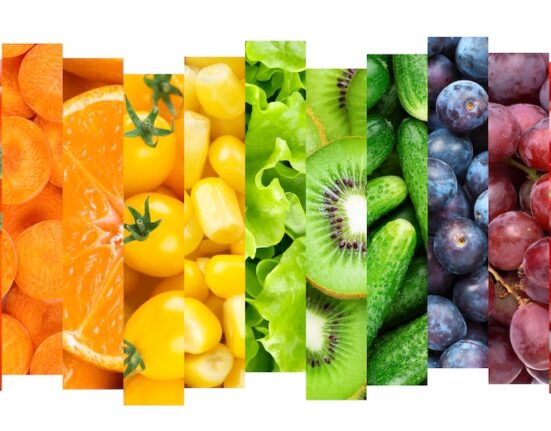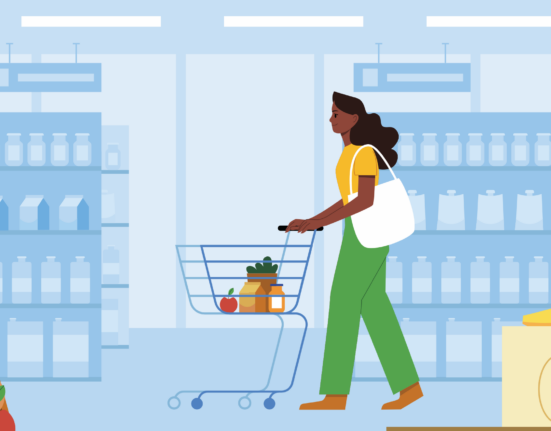The sky above the market was a thick gray winter fog, mingling with the exhaust of forklifts and diesel trucks. Beneath my feet was a sticky goo, a gelatinous cocktail of fruits from around the globe, relentlessly crushed and blended over years of constant chaos. Wholesalers shouted, struggling with the buyers looking over the hundreds, if not thousands of pallets of Chilean cherries waiting to be sold and moved out. As frenzied as the scene may be, there’s a beautiful order to it—proof that chaos and commerce can somehow dance together in a grimy, sticky tango. The sheer volume of fruit moving through this space is staggering—on a busy day, 10,000 tons of cherries alone—an unyielding testament to the market’s insatiable appetite.
An inquisitive outsider might stand in this chaotic scene and wonder, ‘How did we get here? How has such a luxurious, highly perishable fruit become a cornerstone of China’s booming trade with a country on the opposite side of the planet?’ To understand the rise of the Chilean cherry empire, we need to take a step back—far away from the pristine orchards that nestle in the shadows of the Andes—and look somewhere a little less polished: the junkyard.
From Rust to Roots
In his book Junkyard Planet, Adam Minter paints a vivid picture of the global junk trade—an industry that thrives in places like Guangdong’s back alleys and rusting factories. It’s the underbelly of globalization: mountains of discarded electronics and scrap metal, things long-forgotten, now stripped down for the raw materials that keep the world spinning. In many ways, it doesn’t look much different from the chaotic dance in the Jiangnan market, where vendors scramble to meet the relentless demands of a hungry market. China’s appetite for the world’s resources never stopped at scrap metal and copper—now it includes cherries, grapes and blueberries too.
Billions in the Balance
Just like the piles of circuit boards and discarded plastics that flooded into China in the 20th century, billions of dollars’ worth of Chilean and Peruvian minerals poured into Chinese factories, fueling its industrial rise. In 2020 alone, Chile shipped $14 billion worth of copper to China, while Peru added another $7 billion. But this time, the extraction didn’t just leave scars on the land—it opened doors to opportunity. The highways, port facilities, and general infrastructure built to ship millions of tons of copper now have something far sweeter riding along those same routes: millions of boxes of fruit, packed and shipped with the same relentless drive to meet demand.
Why Chile and Peru? Timing and Tactics
Sure, Chinese consumers certainly appreciate luxury, but let’s not kid ourselves—cherries don’t sell for $30 a kilo just because they’re a status symbol. They sell because they hit the market at precisely the right moment. China’s winters leave a gaping hole that Chile and Peru were primed to fill. Southern hemisphere fruits became the ace in the hole during Chinese New Year, a time when demand for fresh, colorful fruits skyrocket as local production goes cold.
Chile now ships hundreds of thousands of tons of cherries to China, making up the vast majority the country’s total cherry imports, worth billions of dollars. The seasonal edge turned cherries into one of Chile’s most valuable agricultural exports. And it’s not just cherries—grapes, blueberries and avocados followed suit, cementing Chile and Peru’s place at the top of China’s fruit market when local options run dry.
So why did Chile and Peru pull ahead of their southern hemisphere rivals like Australia and South Africa? Sure, timing helped, but it was all about tactics. Chile and Peru aggressively pursued favorable trade deals—slashing tariffs and loosening phytosanitary regulations. Chile’s 2005 free trade agreement with China cleared the runway, cutting tariffs on agricultural products and giving Chilean cherries a straight shot into Chinese markets. Peru followed in 2009, positioning itself as a key partner of grapes, avocados and blueberries. Grapes alone brought $250 million. Meanwhile, Australia and South Africa? They got tangled up, hit with higher tariffs and less favorable terms. While Chilean and Peruvian fruit sailed smoothly into Chinese ports, their rivals were left struggling to keep up.
From Mines to Vines — The Infrastructure that Made it All Possible
Let’s not get sentimental—mining and agriculture don’t usually share the spotlight. But in Chile and Peru, they formed an unlikely partnership. The infrastructure built to drag copper and zinc out of the Andes became the same arteries through which high-value fruit flowed. Setting up the proper cold-chain logistics happened seamlessly and set the stage for agricultural exports to scale up fast when China’s appetite for fresh produce exploded. Chile and Peru didn’t need to build from scratch—they just had to repurpose what was already there.
Africa on the Horizon
The world never stops turning. If Chile and Peru thought they’d be the only players at the table, they’d be seriously kidding themselves. Africa is already starting to stake its claim in China’s fruit markets. Countries like Kenya, Tanzania and South Africa are building their trade relationships, ready to step into the gap when China’s appetite for avocados and other produce outgrows its Latin American partners. South Africa exported 115,000 tons of oranges to China in 2019, and Kenya has been making trial runs with avocados to see if they can meet Chinese demands for these increasingly popular fruits.
These aren’t small-time operations either. They’ve seen the playbook that Chile and Peru have written, and they’re looking to replicate it—minus the years of trial and error.
The Challenges Ahead
For Chile and Peru, this isn’t just about staying at the top of the fruit export game—it’s about surviving in an increasingly crowded marketplace. The same infrastructure that once gave them a head start in agriculture is now something they’ll need to defend, as Africa and other regions close in. Holding onto their edge will take more than just relying on the systems that worked in the past.
Trade evolves, just like the goods themselves. What started with copper and zinc became cherries and grapes. And who knows what’s next? One thing’s for sure; whether it’s copper, fruit, or something we haven’t thought of yet, the future belongs to those who adapt, hustle and seize the opportunity before it slips away.





